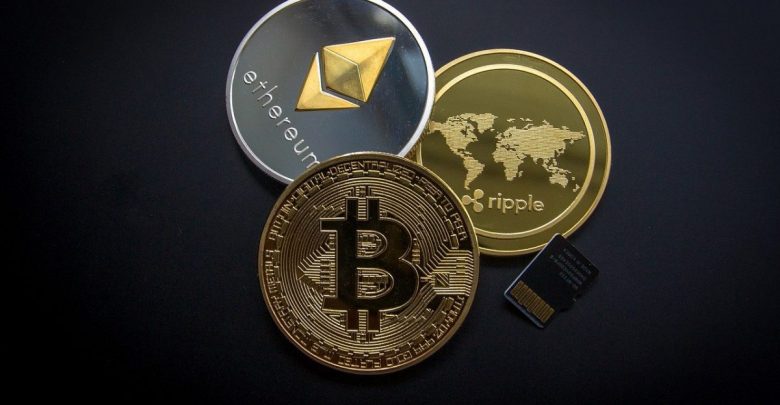
Recently, the world of cryptocurrencies was taken by surprise with the ever-growing popularity of NFTs (Non-Fungible Tokens). Even though NFTs have been popular for quite a bit of time, now it is reaching unprecedented levels of adoption and price.
Speaking of price, 2021 was the year of millionaire auction sales involving NFTs. However, are NFTs fine art, or are they just another hype train that will eventually disappear? Keep reading to find out., to see if it’s better to buy Ethereum or opt to invest in NFTs.
What Are NFTs? – Explaining the Phenomenon
Non-fungible tokens are units of data stored on a blockchain, that certifies a digital asset to be unique. Unlike other digital assets like Bitcoin or Ethereum, NFTs are not fungible, which means one NFT has not the same price as another NFT.
For instance, you can exchange one Bitcoin for another Bitcoin, as they are all the same. However, NFTs are unique, so the premise is not the same.
In technical terms, an NFT refers to a “digital ribbon” pegged to a file, which acts as a cryptographic seal of originality and serves as proof that the file is original or authentic, much like a watermark on real banknotes.
You can hook up an NFT to any kind of digital production, from music to memes (e.g., an NFT of the gif of Nyan Cat, the cute kitten next door that went viral a few years ago, sold for $600,000 in February).
Ultimately, the “certificate” is registered in a blockchain, which makes it possible to track the sending and receiving of information.
The Future is Now – Is Blockchain Technology the Internet’s Notary Service?
The outdated image of an old notary office has nothing to do with the blockchain’s next-level technology. However, they share similar purposes and importance.
Blockchains work like decentralized databases, that is, kept on several computers (nodes) around the world, which record all the characteristics of an operation – who sent it, who received it, when, what object was sent, and how it was received.
Each block of information is encrypted and identified by a code. A chain by these unique blocks is also encrypted, so the blockchain becomes immutable and super secure.
Each node is responsible for verifying the authenticity of the transactions and attest that they are valid. Also, as blockchains are not physically stuck anywhere in the world, they are accessible to anyone who needs to check the network to validate a code.
Hence, it works similarly to a notary certification, but much more technological.
Cryptocurrency, Crypto Art, Crypto Everything – How NFTs Changed the Crypto Industry
Currently, most NFT purchase transactions are also paid with cryptocurrencies and verified by the same blockchain scheme.
Similarly, most NFTs are issued by the blockchain Ethereum and, of course, most purchase transactions for these tokens are paid with the same system’s cryptocurrency, Ether, which is now accepted even in the most traditional auction houses in the world (e.g., Christie’s). This has helped the ETH price to rise in the past months.
Following the blockchain-powered trend, the digital art authenticated by NFTs gained the name of crypto art. “Everyday’s -The First 5000 Days”, the so-called $69 million NFT artwork created by artist Beeple, was paid in full with Ether, in a transaction seen by many as a validation of the cryptocurrency.
After all, if one of the most traditional auction houses in the world has already accepted a digital asset, that should say something about the legitimacy of this asset. Christie’s, however, has not confirmed whether it will accept payment in crypto at more “traditional” auctions.
As digital art gains further evidence, it leaves us with a crucial question – if we already do everything on the internet, why not buy artwork in the same way? Ultimately, blockchain makes access to art easier.
Final Thoughts
Indeed, users can have the same million-dollar JPEG image saved on their computer, doing what you do whenever you want to save something: right-click + ‘save image as’. Like any digital file, it can be copied infinitely.
Buying an NFT, however, gives you something extra, which is ownership of the work. Bringing it to an ordinary, physical art collection, means that anyone can buy a Mona Lisa, but only the Louvre has the original painting.
But nothing prevents you from using the artwork as a decoration in your living room if you want to do so, because you can also purchase usage rights with NFT.
A big bonus of the digital art market is that it’s much easier to verify the authenticity of the artwork, as you just need to consult the NFT “certificate” in the blockchain.
However, only time will tell whether NFT-art will be recognized in the future, standing the test of time and remaining as relevant as the great art masters like Monet, Picasso, Dali, and Da Vinci.
Read Next: Saints Row Crashing Windows 10: Troubleshoot Saints Row The Third



